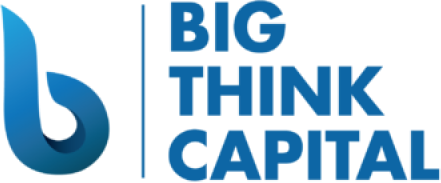Navigating The Impact of Inflation on Small Business Funding: A Comprehensive Guide on Adapting Financial Strategies
Estimated reading time: 5 minutes
- Carefully review and adjust your pricing strategy to account for rising costs while maintaining value for customers.
- Implement cost-saving measures and operational efficiencies to reduce expenses.
- Diversify funding sources to ensure you have access to capital during inflationary periods.
Understanding Inflation and Its Effects on Small Businesses
Inflation is defined as the rate at which the general level of prices for goods and services rises, eroding purchasing power. The Consumer Price Index (CPI) serves as a primary benchmark for measuring inflation, reflecting price changes for consumer goods. As of 2025, inflation has had a pivotal impact on various sectors, particularly for small businesses.
Inflation can lead to an increase in:
- Costs of Goods Sold (COGS): Higher prices for raw materials and supplies mean that businesses need to allocate more funds to maintain inventory and production levels.
- Labor Costs: As employees demand higher wages to keep up with rising living costs, small businesses may face increased payroll expenses.
- Operational Expenses: Rent, utilities, and other fixed costs may rise due to inflation, squeezing profit margins even further.
As inflation continues to be a prominent issue, small business owners must rethink their funding strategies to adapt to these changing conditions.
Funding Options in an Inflationary Environment
Given the current economic landscape, small businesses can explore various funding options to navigate inflation effectively. Understanding the nuances of each option is essential for choosing the best path forward.
- Working Capital Advances
Working capital advances can provide immediate cash flow to cover operational costs or take advantage of opportunities. These advances allow businesses to receive upfront capital based on future sales projections. However, it’s vital to consider that repayment terms may be influenced by inflation, potentially leading to higher overall costs. - SBA Loans
Small Business Administration loans remain a preferred funding option for many small business owners. These loans typically offer lower interest rates and longer repayment terms, making them a viable choice during inflationary periods. With an SBA loan, business owners can secure funding for growth, expansion, or refinancing higher-interest debt. However, it’s essential to be prepared for a lengthier approval process. - Equipment Financing
As many businesses modernize or expand, equipment financing provides a way to acquire essential machinery without straining cash flow. In an inflationary climate, this type of financing can help businesses upgrade outdated equipment, improving efficiency and productivity. Equipment financing terms vary, so business owners should consult with experienced brokers to find the best fit. - Merchant Cash Advances (MCA)
For businesses needing quick capital, a merchant cash advance may provide immediate funding based on future credit card sales. This type of funding can help cover short-term needs but usually comes with higher costs. Business owners should exercise caution and evaluate overall expenses carefully. - Lines of Credit
Establishing a line of credit gives business owners the flexibility to borrow as needed, only paying interest on the amount drawn. This can be particularly useful for managing cash flow fluctuations caused by inflation. As expenses rise, having a safety net can relieve some pressure on business resources.
Adapting Your Financial Strategy During Inflationary Times
To navigate the impact of inflation successfully, small business owners must implement adaptable financial strategies. Here are essential steps to consider:
- Evaluate Your Pricing Strategy
One effective way to combat inflation’s impact is to strategically review pricing. Adjusting prices to reflect increased costs can preserve profit margins. However, it’s crucial to balance this with consumer expectations and market conditions. Engaging customer feedback and creating value can help justify price increases. - Improve Operational Efficiency
Examine operating expenses and identify areas for cost savings. Streamlining processes, investing in technology, and training employees to enhance productivity can boost overall efficiency. This can make businesses more resilient in an inflationary environment. - Build a Cash Reserve
Establishing a cash reserve can provide cushion against economic uncertainties. During inflationary periods, having readily available funds can alleviate the pressure of rising costs or unexpected expenses. Prioritizing cash flow management will empower business owners to make informed financial decisions. - Diversify Funding Sources
Investing time to explore multiple funding sources can help secure the best financing options. Relying solely on one type of funding can lead to challenges in a fluctuating economic environment. Diversifying ensures continued access to capital, even when costs rise or opportunities arise. - Stay Informed About Market Trends
Keeping a pulse on economic trends, interest rates, and funding options will enable business owners to make more strategic decisions. Subscribe to industry newsletters, attend workshops, and connect with financial experts who can provide insights relevant to navigating inflation.
Practical Takeaways for Business Owners
As inflation continues to affect small businesses, it is essential to be proactive and adapt financial strategies accordingly. Here are three takeaways to consider:
- Carefully review and adjust your pricing strategy to account for rising costs while maintaining value for customers.
- Implement cost-saving measures and operational efficiencies to reduce expenses.
- Diversify funding sources to ensure you have access to capital during inflationary periods.
Conclusion
Inflation can pose significant challenges for small businesses, but by understanding its impact and adapting financial strategies, business owners can navigate these challenges effectively. Exploring various funding options and being proactive in addressing financial needs will position companies for success in uncertain economic times.
At Big Think Capital, we are dedicated to empowering small businesses with the funding they need to thrive. Whether you are exploring working capital advances, SBA loans, or lines of credit, our funding experts are here to guide you through the process. Don’t navigate the complexities of small business financing alone. Learn more about your funding options today at bigthinkcapital.com or speak with one of our knowledgeable funding experts. Your success is our priority.
FAQ
What is inflation and how does it affect small businesses?
Inflation refers to the rise in prices for goods and services, which can increase costs for small businesses in terms of materials, labor, and operational expenses.
What funding options are available during inflation?
Funding options include working capital advances, SBA loans, equipment financing, merchant cash advances, and lines of credit, each offering different advantages for navigating inflation.
How can small businesses adapt their financial strategies?
Businesses can adapt by reviewing pricing strategies, improving operational efficiency, building cash reserves, diversifying funding sources, and staying informed about market trends.






